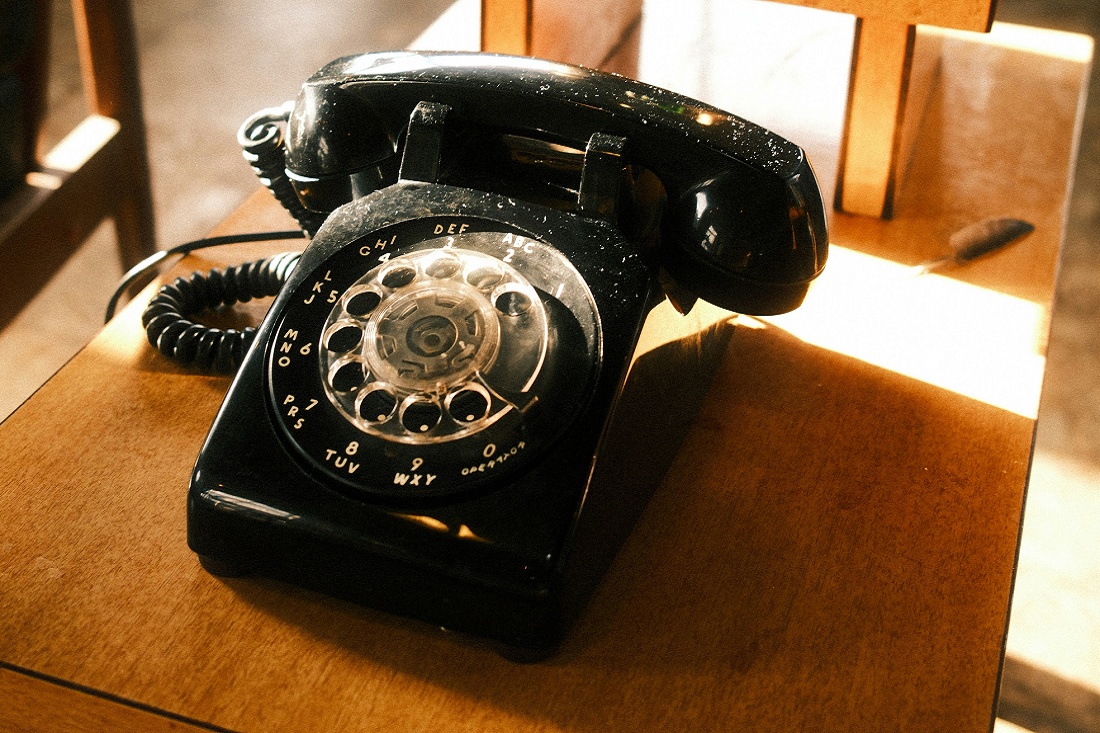What is a Biophilic Office Design?
A biophilic office design incorporates natural elements into the workspace to enhance employee well-being and productivity. This can include features like natural light, wood, stone, and water elements that help create a calming, nature-inspired environment.
The design is based on the biophilia hypothesis, which is the idea that humans have an innate need to connect with nature. Biophilic design aims to create workspaces that feel “alive” by using sunlight, airflow, and greenery, whilst incorporating sensory experiences like natural sounds and textures.
Whether you’re looking to upgrade your current workspace or considering renting a serviced office with a biophilic design, this guide will cover everything. From the history to the benefits and our expectations for the future of biophilic office spaces, we have put it all together for you.
The History & Evolution of Biophilic Offices
1984 – Edward Osborne Wilson discusses the biophilia hypothesis in his book, Biophilia, stating that humans are naturally drawn to nature.
1990s – Architects such as Stephen R. Kellert started researching ways natural systems could be implemented into the built environment, such as offices and commercial spaces.
2010s – Research by the University of Exeter found a link between natural elements in offices and improved well-being. They found that “simply enriching a previously Spartan space with plants served to increase productivity by 15%”.
Late 2010s – Biophilic designs were growing more widespread, with buildings like Amazon’s Spheres becoming case studies for biophilia.
Today – Biophilic office spaces are a key differentiator in contemporary workspaces, especially in competitive cities like London. Serviced office providers are now turning to biophilic features to provide a unique and premium offering.

The Six Principles of Biophilic Office Design
Creating a biophilic space is more than putting a single potted plant on a desk. The principles of biophilic office design translate the concept of “connection to nature” into specific, actionable tips, providing a framework for designing biophilic spaces.
1. Environmental Features
These are the aspects that immediately come to mind when talking about “biophilic spaces”. Natural elements include plants, earthy tones, water features, aquariums, and natural materials like stone, wood, and clay.
These elements directly link to nature and are commonly the starting point for turning a workspace into a biophilic office.
2. Natural Shapes & Forms
Biophilic architecture features curves, arches and domes which mimic organic shapes. These shapes are more calming to the brain, thus reducing stress and creating a sense of harmony.
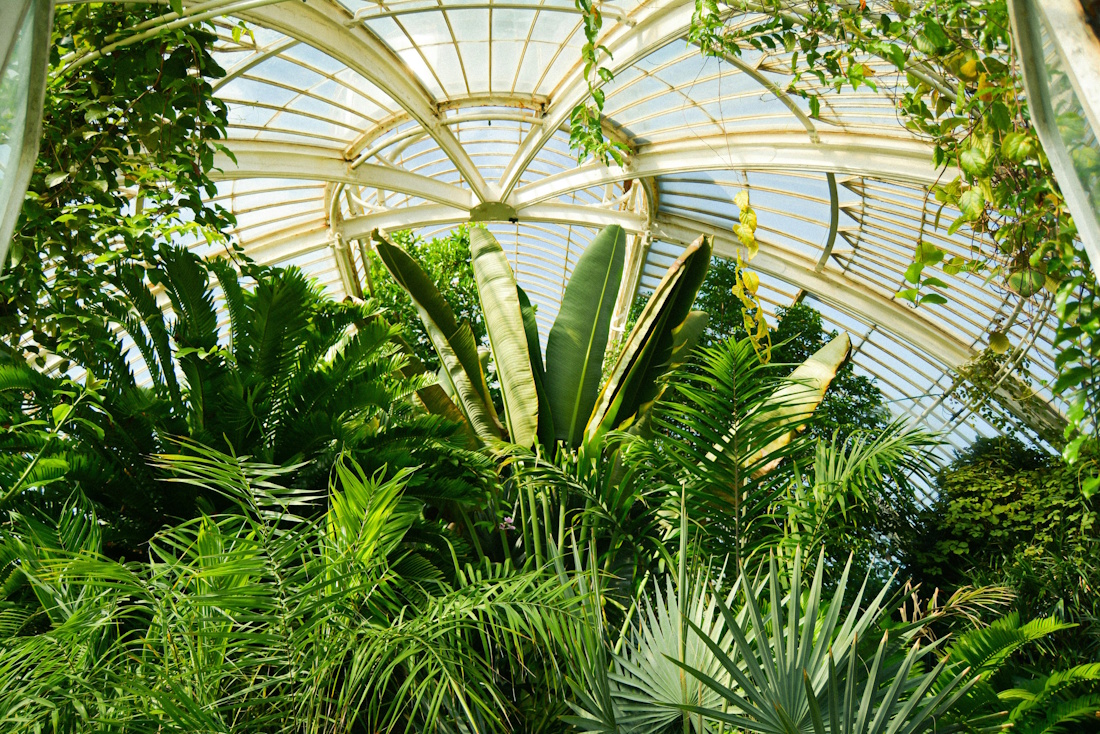
3. Natural Patterns & Processes
This principle refers to the human body’s natural rhythms. Excellent examples include office lighting systems, which change throughout the day from warm to cool tones.
Wallpapers and artwork in biophilic offices often feature natural textures and patterns that mimic leaves, ocean waves, or tree bark. These details create a workspace that feels alive.
4. Light & Space
The use of light is a central aspect of biophilic design. The quality and intensity of light can reflect the time of day or the purpose of a room. It is common to have warm lighting in a breakout space and brighter lights over workstations.
Open-plan layouts are a key part of biophilic design as they promote air flow whilst increasing employee comfort.
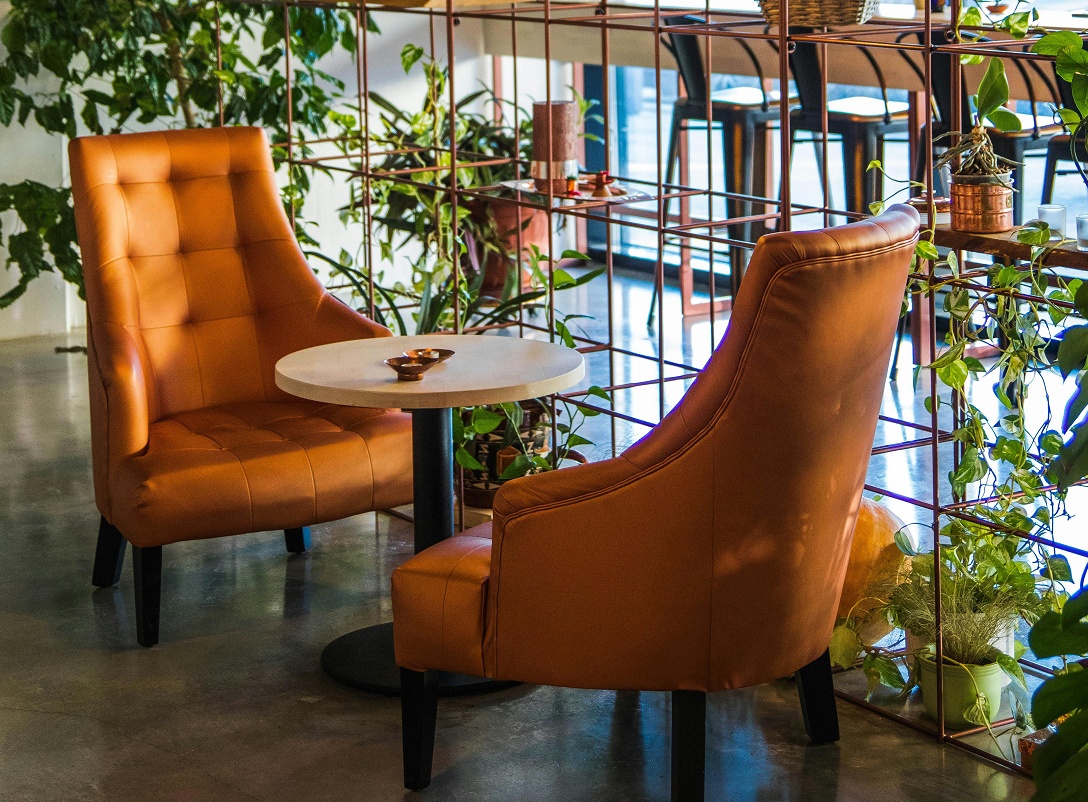
5. Place-Based Relationships
This focuses on linking the design of the office space to its local area, history or culture. This could include using locally sourced materials or incorporating artwork which reflects the area or the building’s heritage. This gives the workspace and employees a sense of “belonging” to the area.
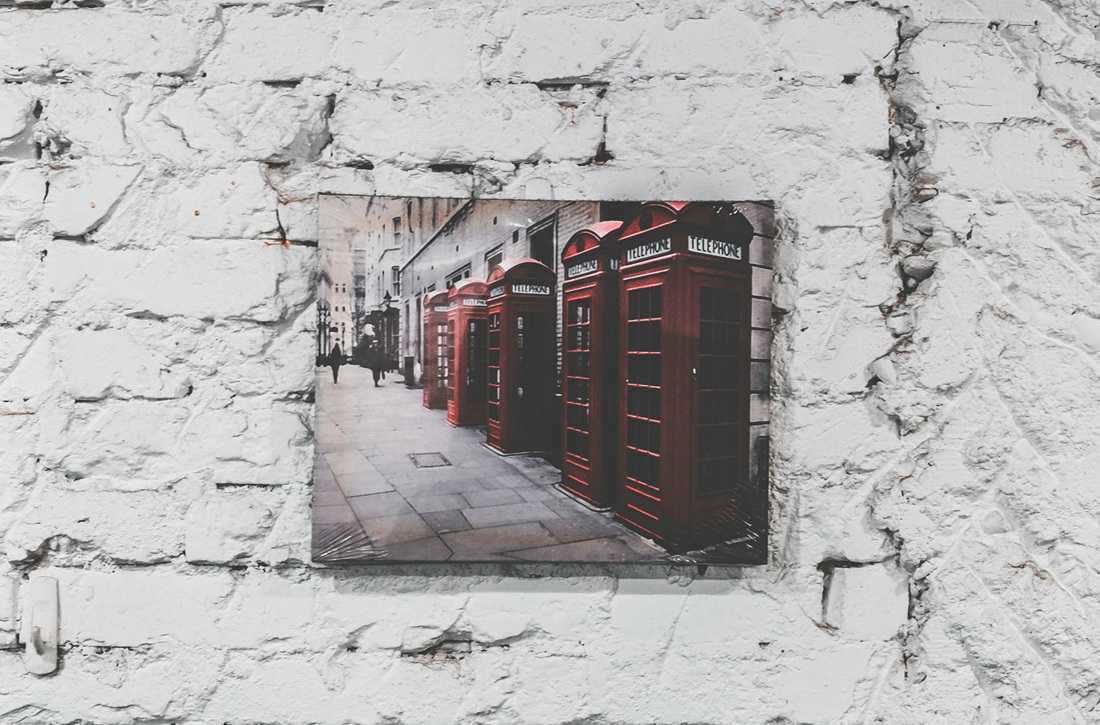
6. Evolved Human-Nature Relationships
This principle is based on our human connection to nature. This includes elements such as hidden nooks, unique views and dramatic natural features. These elements spark curiosity and promote exploration to support cognitive engagement.
The Benefits of Biophilic Offices
• Reduced stress
Exposure to nature has been proven to reduce stress and to help employees recharge.
• Improved concentration
Natural light, greenery, and air flow help improve employees' concentration.
• Higher air quality
Plants naturally filter pollutants, improving air quality and respiratory health.
• Lower employee absenteeism
A healthier workplace leads to fewer illnesses and mental health-related absences.
• Enhanced creativity
Being surrounded by nature stimulates the brain and has been known to help problem-solving and enhance creativity.

• Improved acoustics
Wood finishes and greenery work well to absorb sound and reduce noise in open-plan spaces.
• Positive brand perception
A biophilic office space reflects a company’s commitment to employee and environmental well-being.
• Greater employee satisfaction
When employees enjoy their surroundings, they are more likely to feel satisfied at work.
• Sense of belonging
Biophilic designs provide a cohesive atmosphere where employees feel connected to the workspace and the business.

Ways To Incorporate Biophilic Features
If you have limited customisation options in your workspace, for example, if you’re renting an office space, here are a few ways you can incorporate biophilic features:
• Introduce plants
Greenery is one of the easiest and most cost-effective ways to incorporate biophilic elements into your office. Low-maintenance plants such as snake plants and ferns help improve the air quality while requiring minimal care.

• Maximise natural light
Position workstations near windows and remove any items which can block the sun. Mirrors and glass partitions help maximise the light flow, boosting alertness.
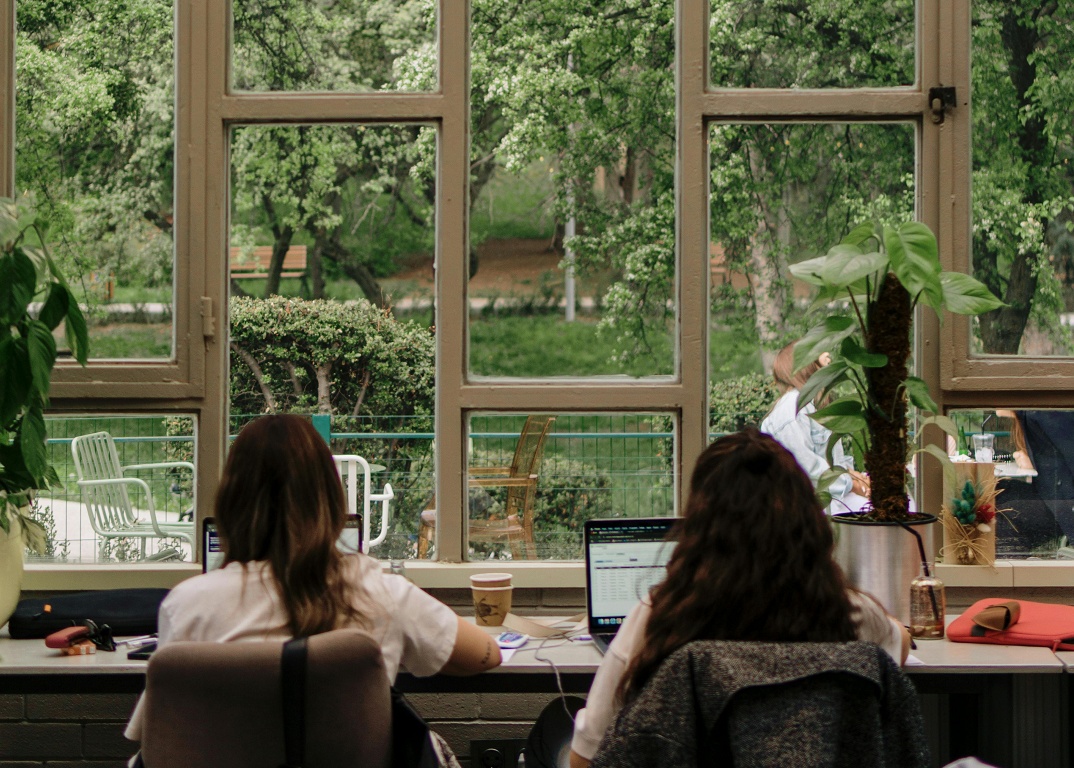
• Use natural materials
Office furniture made from wood, cork, and stone provides a warm feeling that supports the sensory connection to nature.
• Add natural sounds and scents
Background music, including birdsongs, rain, or flowing water, is a great biophilic addition. Essential oils such as cedarwood or pine can promote the feeling of being in nature.
• Incorporate artwork inspired by nature
Display artwork that features landscapes, wildlife, or greenery. These have been proven to have a calming effect.
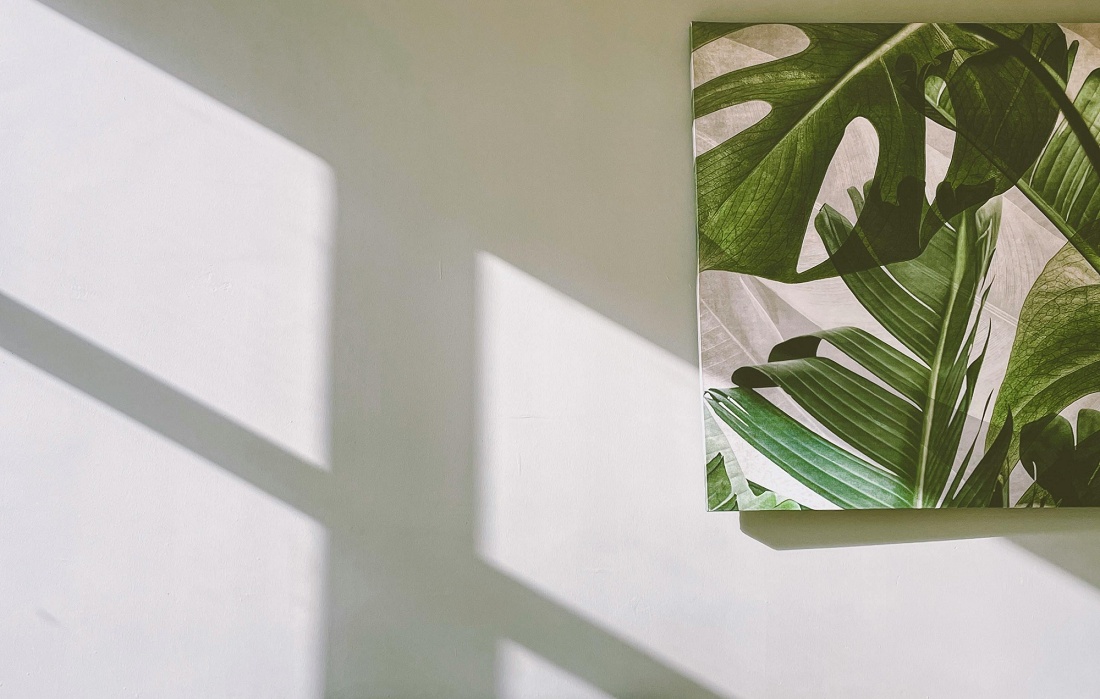
• Focus on earth tones
Greens, browns, and muted colours mimic nature and reduce eye strain. Using these colours for furnishings or walls can provide a stylish way to incorporate biophilic features.
Adapting Biophilic Designs to Different Office Types & Budgets
We’ve given you a list of ways to incorporate biophilic features in your workspace, but what if you’re limited on space? Or you’ve got a tight budget? This section will teach you how to adapt biophilic designs based on your office type and finances.
Small Offices
For small offices, space efficiency is crucial. Wall-mounted planters or hanging pots will free up floor space. Mirrors and light-coloured walls will also enhance natural light, whilst artwork and nature-themed wallpapers can create the illusion of outdoor views.
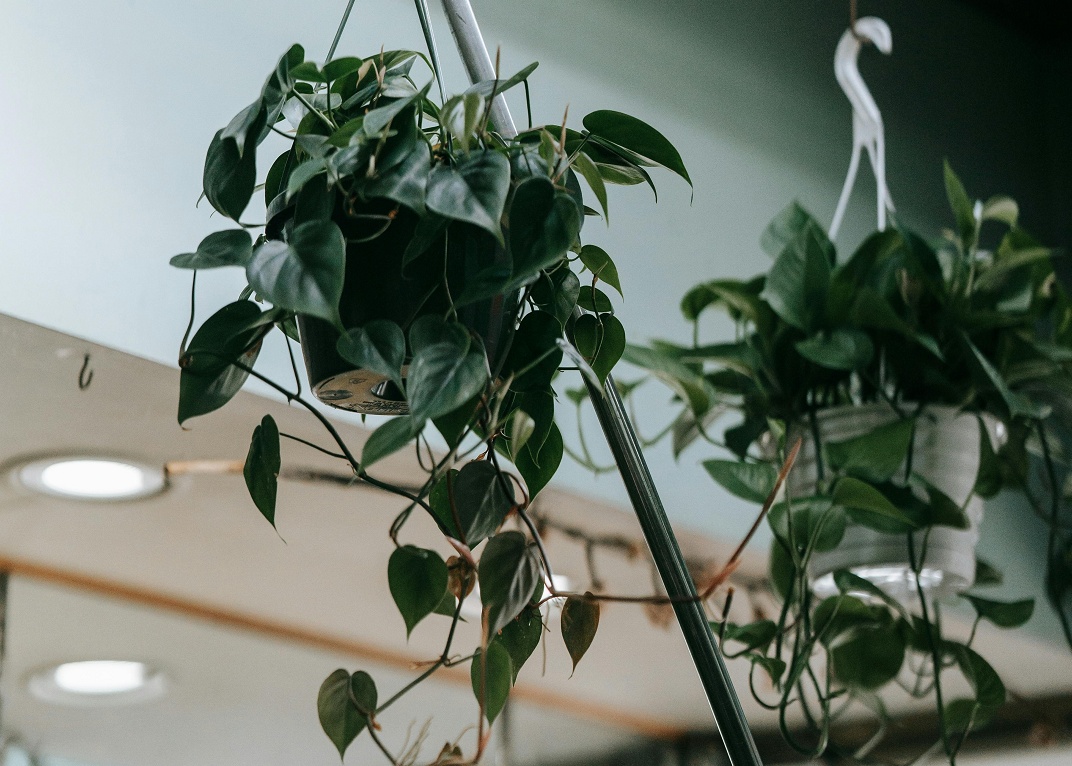
Budget-Friendly Options
If you’re on a budget, adding biophilic features can still be an option. Faux plants, nature-themed art and upcycled or recycled furniture can offer a biophilic atmosphere without ongoing expenses. Tabletop water features are also an excellent way of enhancing the sensory experience on a budget.

Large Workspaces
Large workspaces often have more complex floor plans, which is ideal for implementing biophilic zones. These spaces can include wellness rooms or quiet areas with elements like plants or natural textures. Larger companies tend to have more investment, allowing them to explore more ambitious features like living walls and internal courtyards.

Creative Studios
Creative agencies thrive on collaboration and visual stimulation. Biophilic designs in these workspaces can be adapted to include earthy colour palettes, tactile surfaces, and art installations. Open spaces in these offices can encourage collaboration and idea sharing.
How Biophilic Design Supports ESG Goals
ESG stands for Environmental, Social and Governance, which are the three key areas businesses should prioritise to operate responsibly or sustainably. Naturally, biophilic designs align with ESG objectives by creating environmentally conscious, healthy workspaces.
For businesses renting serviced offices in London, choosing a provider that offers biophilic spaces is a simple way to achieve ESG goals.
Here’s how biophilic designs contribute to each part of ESG:
E - Environmental
As biophilic spaces prioritise natural light and airflow, they reduce the need for artificial lighting and climate controls, thus reducing energy consumption. Using sustainably sourced or recycled materials also lowers a company’s carbon footprint, helping it to meet sustainability targets.

S - Social
By improving employee wellbeing, biophilic offices support the “social” aspect of ESG. As mentioned, biophilic design reduces stress, improves mental health and boosts employee morale. This creates an inclusive workspace that supports a happier and healthier team.

G - Governance
Implementing biophilic features in an office demonstrates a company’s commitment to responsible workplace practices. It can help achieve green building certifications such as BREEAM, which enhance transparency and accountability, key components of governance.
Our Favourite Biophilic Serviced Offices in London
In our 23 years’ experience marketing office space across the UK, we have recently seen a dramatic rise in the number of biophilic serviced offices, especially in London. These are a few of our favourites:
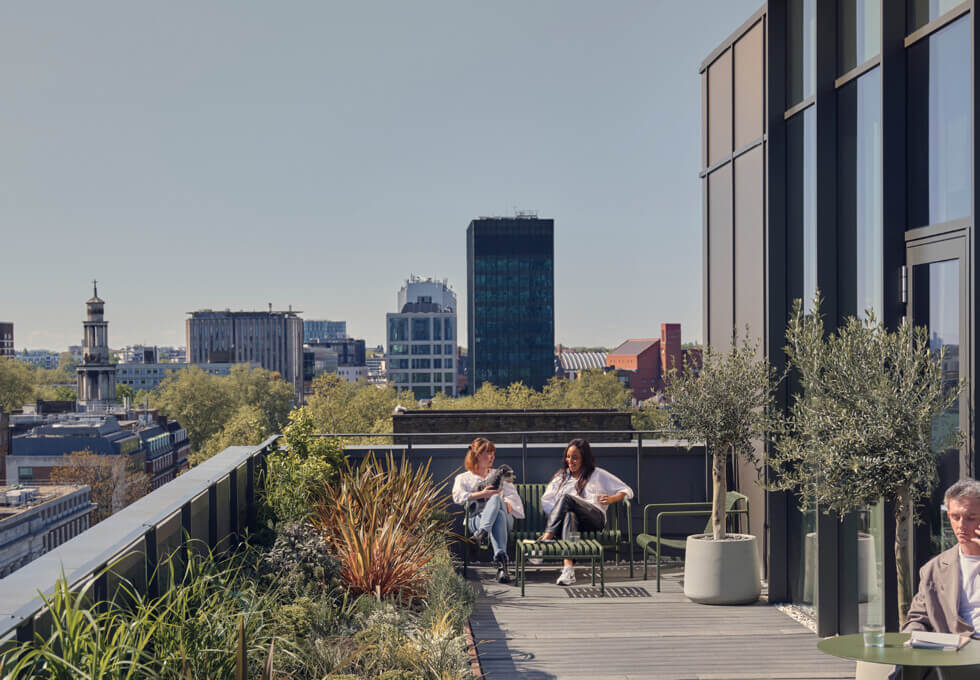
We love the mix of sophistication and natural elements like earthy tones and wood panelling. The large windows provide natural light, which we are always looking for in biophilic offices. The roof terrace is covered in greenery, providing a quiet escape amongst the hustle and bustle. From visiting the building, we’ve found that there is a calm and welcoming atmosphere, perfect for collaboration and focus.
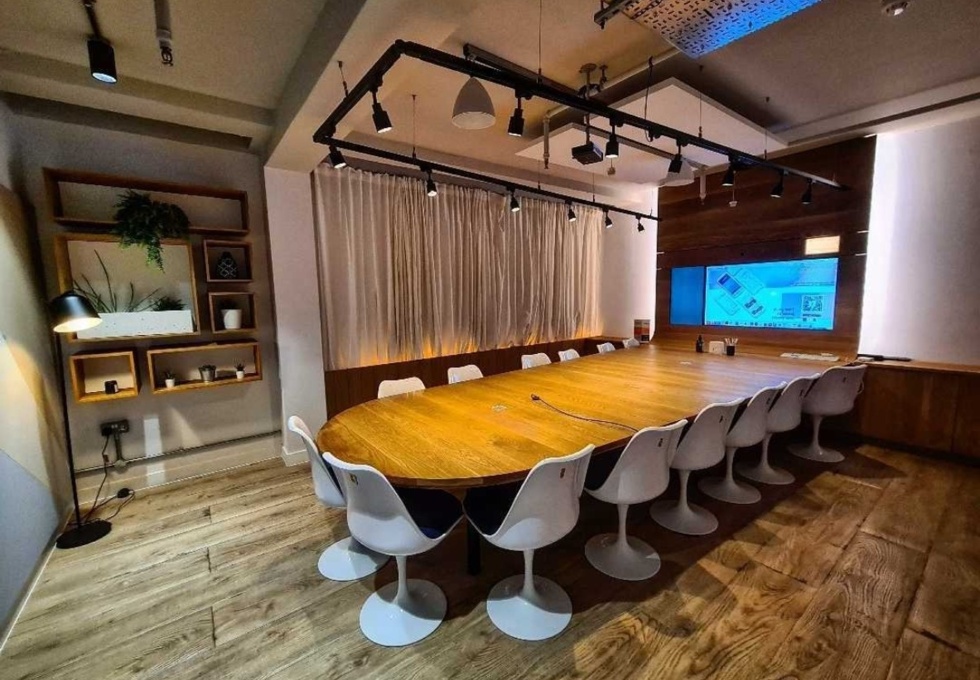
While visiting this building, we found it offered a creative vibe. Vibrant biophilic elements are infused throughout with greenery and lush plants. Wellbeing zones, wooden flooring and natural light are fantastic ways biophilic design supports productivity and wellbeing.
Heneage Street, Spitalfields, E1
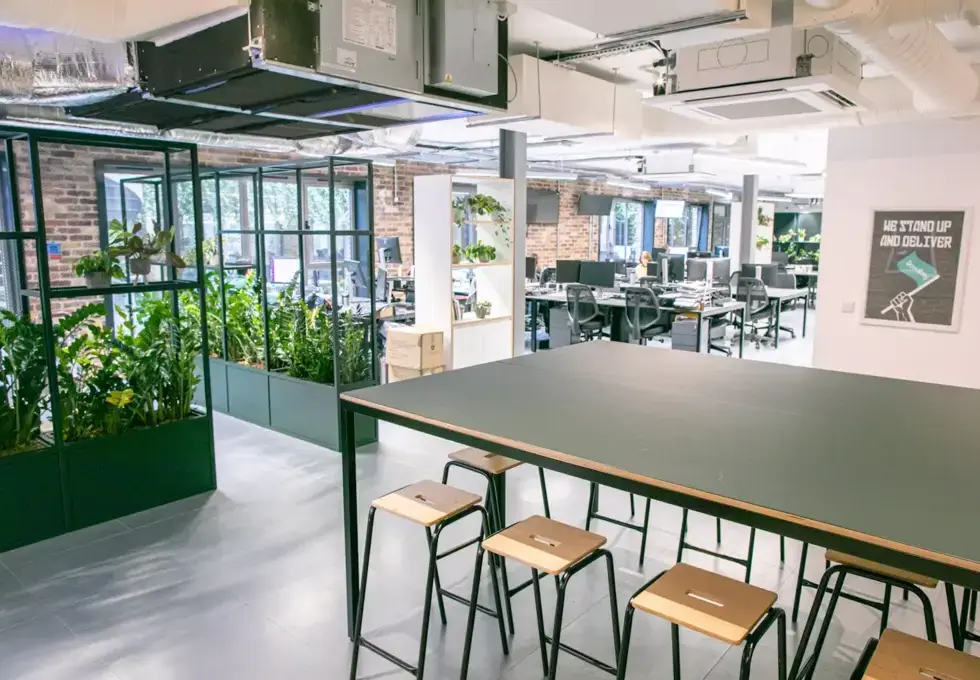
This is one of our favourite spaces because of its mix of indoor and outdoor biophilic elements. The roof terrace and courtyard offer excellent views and are perfect for outdoor meetings. The interiors boast natural textures like brick to create a warm environment. We think this building is a great example of consistent biophilic features throughout.
Biophilic Design in Hybrid & Remote Work Models
As more businesses adopt a hybrid or remote working model, we see more companies embracing biophilic designs beyond the traditional office space. This shows that nature has a role in every work environment, from a hot desk in a coworking space to a home office.
This is where we’ve found biophilic designs being used in hybrid setups.
In Shared Offices
Hybrid or remote teams often use coworking spaces when they need an office. Biophilic elements in these spaces include movable plant pots and organic materials to maintain a connection to nature and reduce stress.

At Home
Remote workers have the freedom to apply biophilic principles to their home offices by adding plants, maximising natural light and incorporating nature-themed artwork.
Especially in a home office, a connection to nature can alleviate feelings of isolation. Companies can encourage staff to personalise their home setups with biophilic elements to support mental health and productivity.

Biophilic Policies
Alongside casually encouraging employees to personalise their home workspaces, many businesses are now implementing official biophilic policies. These include providing guidelines for setting up nature-inspired home offices, offering financial incentives for wellbeing activities and suggesting biophilic coworking spaces.
This helps employees maintain a strong connection to nature and reinforces a consistent wellbeing culture across remote and on-site teams.
Future Trends in Biophilic Office Design
Since the development of biophilic workspaces, there has been a rise in their popularity and what they offer. These are a few of our predictions for the next generation of biophilic offices.
Virtual Nature
As immersive technology becomes more accessible, we predict a rise in the digital representation of nature. These could include LED skylights and even wall projections of moving landscapes. In high-density urban offices, these features could turn almost any office into a biophilic space.
Smart Biophilia
Some workspaces already have automated lighting to mimic natural daylight patterns and innovative irrigation systems to recycle rainwater to feed plants. We think these features will become more widespread, with features like garden maintenance being controlled automatically.
Regenerative Spaces
The most biophilic offices are focused on sustainability. This could shift to being regenerative, meaning that not only will the workspaces reduce harm, but they will actively restore the environment. Examples could include entirely biodegradable materials and green spaces that promote biodiversity.
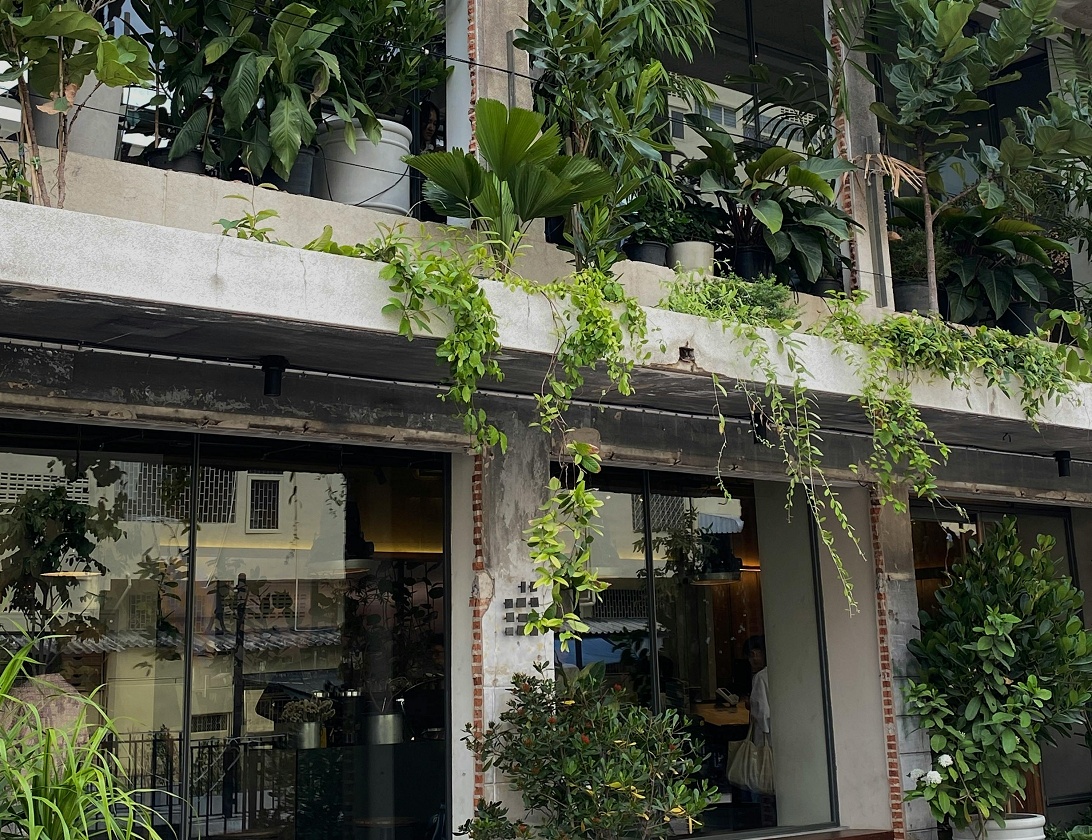
As you can see, biophilic office designs are more than just a design trend. It’s a proven method which improves how employees work and feel. Whether setting up a brand-new HQ or redesigning your home office, incorporating nature is a sustainable investment with many benefits.





